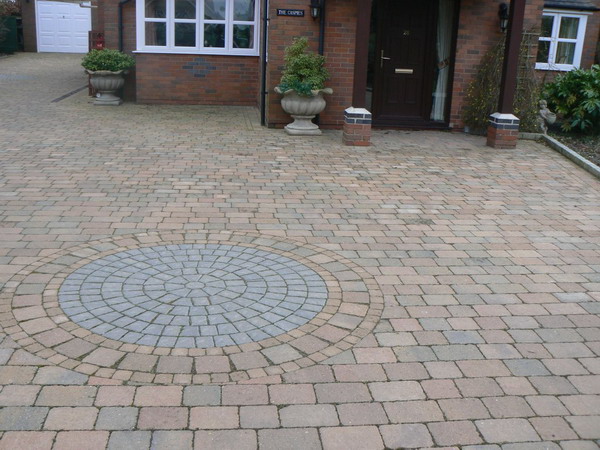Block paving a driveway yourself is a hugely rewarding job, but in order to save time further down the line, it is best to put in the right level of preparation time. The finished job can only be as good as the preparation that is put in at the early stages.
Before setting out, you need to purchase some good tools for the job. Take a trip to your local DIY shop and speak to customer services about the best tools for block paving. Good block paving is in the planning, so read the following and when you get started, take your time.
Edging
Block paving requires a firm surround so firstly it is important to lay down a clear edge to the paving blocks that are going to put down – remember that bricks can be used to edge the paving area too.
Laying Block Paving
Once the area that is going to be paved has been set out and clearly defined, make sure that any rainwater will drain away from the property. This is improved by removing surplus soil and concrete as this could have a direct effect on the levels.
Removing concrete
Remove any old concrete and construct a sub-base using a scalping stone.
Laying the Base
Scalpings should be placed on a weed base as this will stop weeds growing through the new paving stones. This means that a decent depth must be excavated in order to allow for this.
Scalpings should be laid to a bed of between 100 and 150mm. Once these are in and fairly compact, a layer of sand should be placed on top.
After this, it is a good idea to vibrate this surface before actually laying the paving bricks. Be mindful that lumps can form in the sand layer and can go unnoticed until compacting the pathway itself. There is a risk here that lumps may burst at the final stage, increasing the risk of bricks falling into the void that is created. This can be avoided by scrapping back the sand to get it as level as possible.
Laying the Bricks
Once the sand is properly laid, the bricks can be laid across it. Be sure to press them together as closely as possible and press them gently into the layer of sand. Bricks should be laid with joints overlapping so cuts can be made later. Cuts should then be made using a disk cutter. However, if there is a much larger area where cuts are required, it is better to use a proprietary cutter or ‘splitter’ – which can be hired from a tool shop.
Take your Time
Do not, under any circumstances, attempt to rush the job, as this will simply create more work further down the line. When the path is laid and the cuts complete, it needs to be covered with silver or playpit sand which binds the whole lot together and stops bricks moving once traffic starts to use the path.
Then, brush the sand away but only after ensuring that every square foot of the driveway has been serviced – re-start the process until you are sure that every single joint is full.
Neil Hodges is the director of Witham based Block Paving Maintenance. He has over 25 years’ experience in the industry of block paving driveways, repairs and maintenance.




